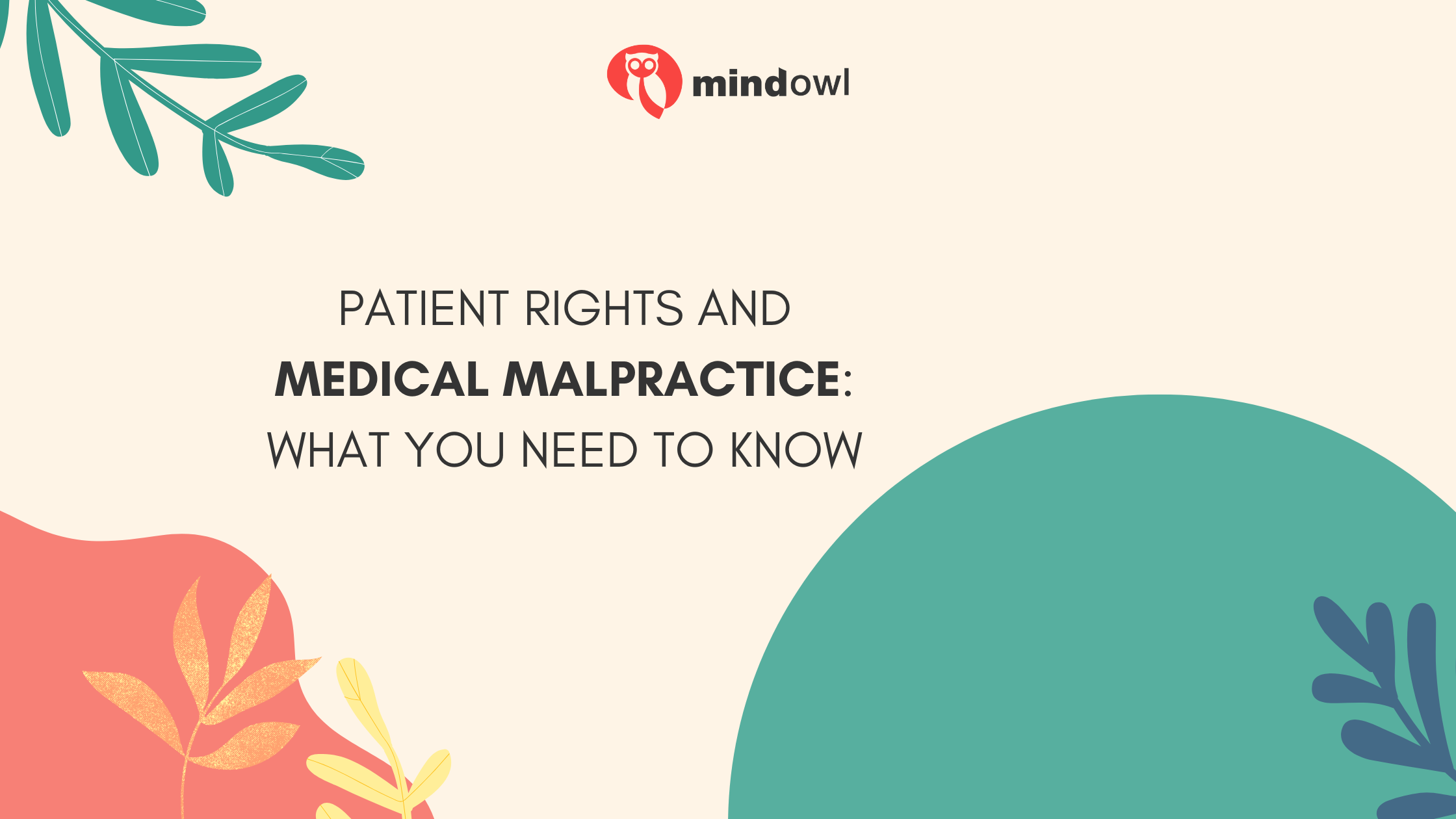
Want to know something that might shock you?
Medical errors kill more than 250,000 Americans every year. That’s right — medical malpractice is now the third leading cause of death in the United States, right behind heart disease and cancer.
Here’s the thing…
Most people don’t realize they have specific rights when it comes to medical care. And even fewer understand what happens when those rights get violated. Whether you’re dealing with a misdiagnosis, surgical error, or any other form of medical negligence, knowing your patient rights could literally save your life.
But there’s a problem. The healthcare system can feel overwhelming, especially when something goes wrong. That’s why understanding both your patient rights and medical malpractice is so important.
Your Complete Guide:
- Understanding Your Basic Patient Rights
- What Exactly Is Medical Malpractice?
- The Most Common Types of Medical Errors
- When You Need Legal Help
- How to Protect Yourself Moving Forward
Understanding Your Basic Patient Rights
Every patient has fundamental rights that healthcare providers must respect. These aren’t just suggestions — they’re legally protected standards that form the foundation of quality medical care.
Your core patient rights include:
- The right to receive safe, appropriate medical care
- The right to informed consent before any procedure
- The right to access your medical records
- The right to refuse treatment
- The right to privacy and confidentiality
Think of these rights like a safety net. They exist to protect you from harm and ensure you receive the best possible care.
But here’s what’s interesting…
Many patients don’t know they can ask questions, seek second opinions, or even refuse recommended treatments. You have the right to be an active participant in your healthcare decisions, not just a passive recipient.
The World Health Organization recently launched their first-ever Patient Safety Rights Charter, emphasizing that 1 in every 10 patients experience harm in healthcare, and about 50% of this harm is preventable.
What Exactly Is Medical Malpractice?
Medical malpractice happens when a healthcare provider’s negligence causes harm to a patient. It’s not just about bad outcomes — medicine isn’t perfect, and sometimes treatments don’t work despite everyone doing everything right.
For medical malpractice to occur, four specific elements must be present:
The healthcare provider owed you a duty of care (like a doctor-patient relationship existed)
They breached that duty by failing to meet the accepted standard of care
You suffered harm as a direct result of their actions or inaction
You experienced damages like additional medical bills, lost wages, or pain and suffering
Here’s the reality…
Medical malpractice cases are incredibly complex. That’s why working with responsible medical malpractice lawyers becomes essential when you suspect negligence has occurred. These legal professionals understand both the medical and legal aspects of your case.
The statistics paint a sobering picture. According to recent data, approximately 31.2% of physicians face at least one medical malpractice lawsuit during their careers. This shows just how common medical errors really are.
The Most Common Types of Medical Errors
Want to know what causes the most medical malpractice claims?
Misdiagnosis and delayed diagnosis account for about 32% of all medical malpractice cases. When doctors fail to correctly identify your condition or take too long to figure it out, the consequences can be devastating.
Cancer, infections, and vascular events are the most commonly misdiagnosed conditions. A delayed cancer diagnosis, for example, can mean the difference between successful treatment and terminal illness.
Surgical errors make up another 25% of malpractice claims. These can include:
- Operating on the wrong body part
- Leaving surgical instruments inside patients
- Damaging organs during surgery
- Performing the wrong procedure entirely
Medication errors harm about 1.5 million patients annually in the United States. The most commonly cited medications in these cases are insulin and morphine — drugs that can be deadly if administered incorrectly.
Birth injuries represent another serious category. When medical providers make mistakes during labor and delivery, both mothers and babies can suffer lifelong consequences.
Here’s something that might surprise you…
Over 96% of medical malpractice claims are resolved outside of court through settlements. This means most cases never see the inside of a courtroom, but victims still receive compensation for their injuries.
When You Need Legal Help
How do you know when you need to contact a medical malpractice attorney?
If you experienced unexpected complications that seem related to medical care, it’s worth investigating. Not every bad outcome is malpractice, but some definitely are.
If your condition got worse after treatment or if you developed new health problems that weren’t explained, you might have a case.
If healthcare providers were dismissive of your concerns, failed to order appropriate tests, or ignored obvious symptoms, these could be red flags.
If you have questions about whether your care met the proper standards, most medical malpractice attorneys offer free consultations to evaluate your case.
Medical malpractice legal services can help you understand whether you have a viable claim and guide you through the complex legal process. These cases require extensive medical knowledge and legal expertise that most people simply don’t have.
Remember, there are time limits for filing medical malpractice claims. In most states, you have between two to three years from when you discovered (or should have discovered) the malpractice to file a lawsuit.
How to Protect Yourself Moving Forward
The best defense against medical malpractice is being an informed, engaged patient.
Always ask questions about your diagnosis, treatment options, and potential risks. If something doesn’t make sense, speak up.
Get second opinions for major diagnoses or surgical procedures. Most good doctors welcome second opinions because they want you to feel confident in your care.
Keep detailed records of all your medical appointments, treatments, and medications. Take notes during visits and ask for copies of test results.
Research your healthcare providers before choosing them. Look up their credentials, board certifications, and any history of malpractice claims.
Bring someone with you to important appointments. Having another person there can help you remember information and ask questions you might forget.
Trust your instincts — if something feels wrong with your care, don’t ignore those feelings. You know your body better than anyone else.
Patient advocacy is becoming increasingly important. Many hospitals now have patient advocates who can help you navigate the healthcare system and ensure your rights are protected.
Staying Informed and Protected
Patient rights and medical malpractice might seem like complex topics, but they don’t have to be overwhelming. Understanding your basic rights as a patient gives you the foundation to receive quality care and speak up when something isn’t right.
Medical errors are far more common than most people realize, but many are preventable with proper communication, attention to detail, and respect for patient rights.
The key takeaways:
- Know your patient rights and don’t be afraid to exercise them
- Understand what constitutes medical malpractice
- Be an active participant in your healthcare
- Keep detailed records of all medical care
- Don’t hesitate to seek legal advice if you suspect negligence
If you believe you’ve been the victim of medical malpractice, time is critical. The sooner you speak with qualified legal professionals, the better they can protect your rights and help you seek the compensation you deserve.
Your health and safety matter. By staying informed about patient rights and medical malpractice, you’re taking an important step toward protecting yourself and your family in our complex healthcare system.
MindOwl Founder – My own struggles in life have led me to this path of understanding the human condition. I graduated with a bachelor’s degree in philosophy before completing a master’s degree in psychology at Regent’s University London. I then completed a postgraduate diploma in philosophical counselling before being trained in ACT (Acceptance and commitment therapy).
I’ve spent the last eight years studying the encounter of meditative practices with modern psychology.

